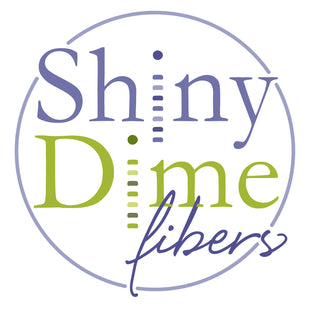
Color Theory in Weaving: Simultaneous Contrast
When making color decisions in weaving, it is important to know that context changes color.
Earlier, I wrote a post about how to consider VALUE when choosing colors for weaving with a painted warp. Most often, I take advantage of black to bring out the vibrant colors of hand-painted yarn. A dark contrasting value will make colors stand out more; a light contrasting value will make color appear darker and somewhat duller.
Taking this a step further, we can think about how SIMULTANEOUS CONTRAST changes the appearance of color.
It helps to understand "optical blending" (where two colors woven together will blend optically to appear as another color), by looking at how all the aspects of one color can affect your perception of how another color appears.
HUE, VALUE, and SATURATION will all affect the appearance of colors placed together.



Changing the ground color will change the pattern color.


So how does this affect your weaving choices?
Have you ever held two cones or skeins side-by-side, thinking they look like great colors to work with, only to be disappointed by the results in your weaving?
Many times it's because when theses colors interact with each other, the perception of the individual colors change. And different weaving patterns will bring these colors together differently. So those two colors might work great together in one weave structure, and less so in another.


The same pink stripe can be made to look very different

Longer floats in a pattern can change how perception is affected

Notice when colors are closer in value, they tend to recede or blend together more. Bright colors tend to become duller when paired with light values, and appear brighter when paired with dark.
Also, either with longer floats or an unbalanced weave (warp-faced or weft-faced) the less sort of "optical blending" that happens (where two colors appear to blend into a third). So if you want a particular color (or painted warp) to stand out, you would want for it to be more prominent through weave structure and paired color choices. Optical blending can change the perception of a color more.
So what does this mean for choosing color in my weaving?
When thinking of colors in a weaving, consider:
|
|---|
It's a lot to think about! Sampling is always a great way to figure out color interaction. Keep your color samples, they'll help you make decisions later! How you work with color will depend greatly on the weave structures you choose, and your personal aesthetic.
Another good method is weaving color gamps, or creating a woven color palette to help guide color decisions. Making wrapped cards of your color ideas can also give you a good starting point.
Understanding color interaction takes practice. And I think part of it is just taking the time to notice how colors are interacting with each other, so you can come to know what works for you and what doesn't.
Especially with a painted warp, where colors are shifting, choosing colors for a weft can be a challenge! What works in one area of a weaving might not work as well in another.
For this reason, I'm a big fan of exploring color with one weave structure for a while. I used the turned taqueté pattern on one loom for most of a year! By the time I was done I'd tied on so many warps the back beam was getting full of yards of tied on ends.
Want to know more about simultaneous contrast? You can learn a lot more about this from Josef Alber's book Interaction of Color (I'm not an affiliate for anyone. I recommend trying to find it on Bookshop.org and supporting your local bookstore!)
